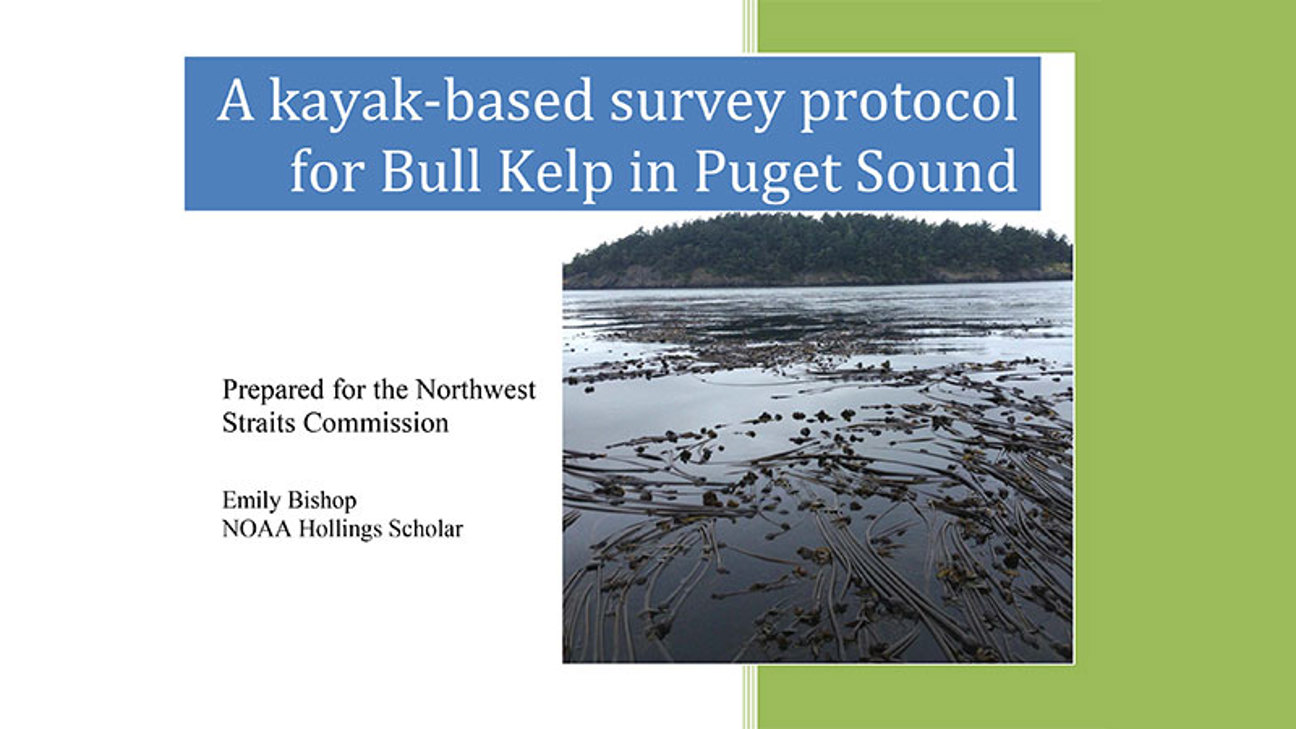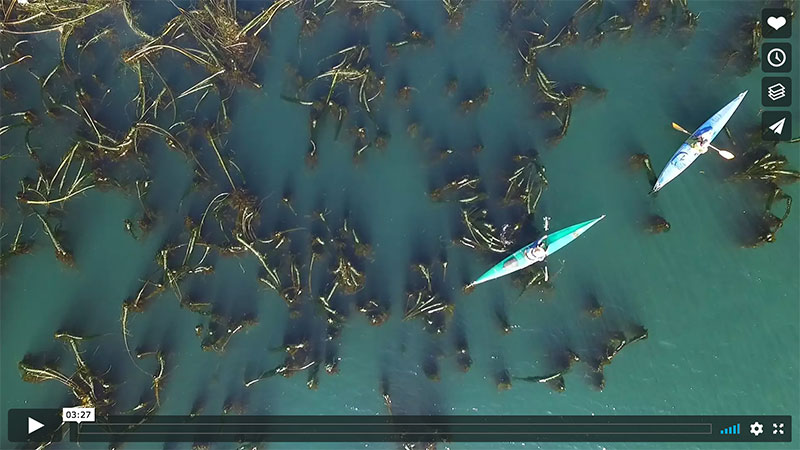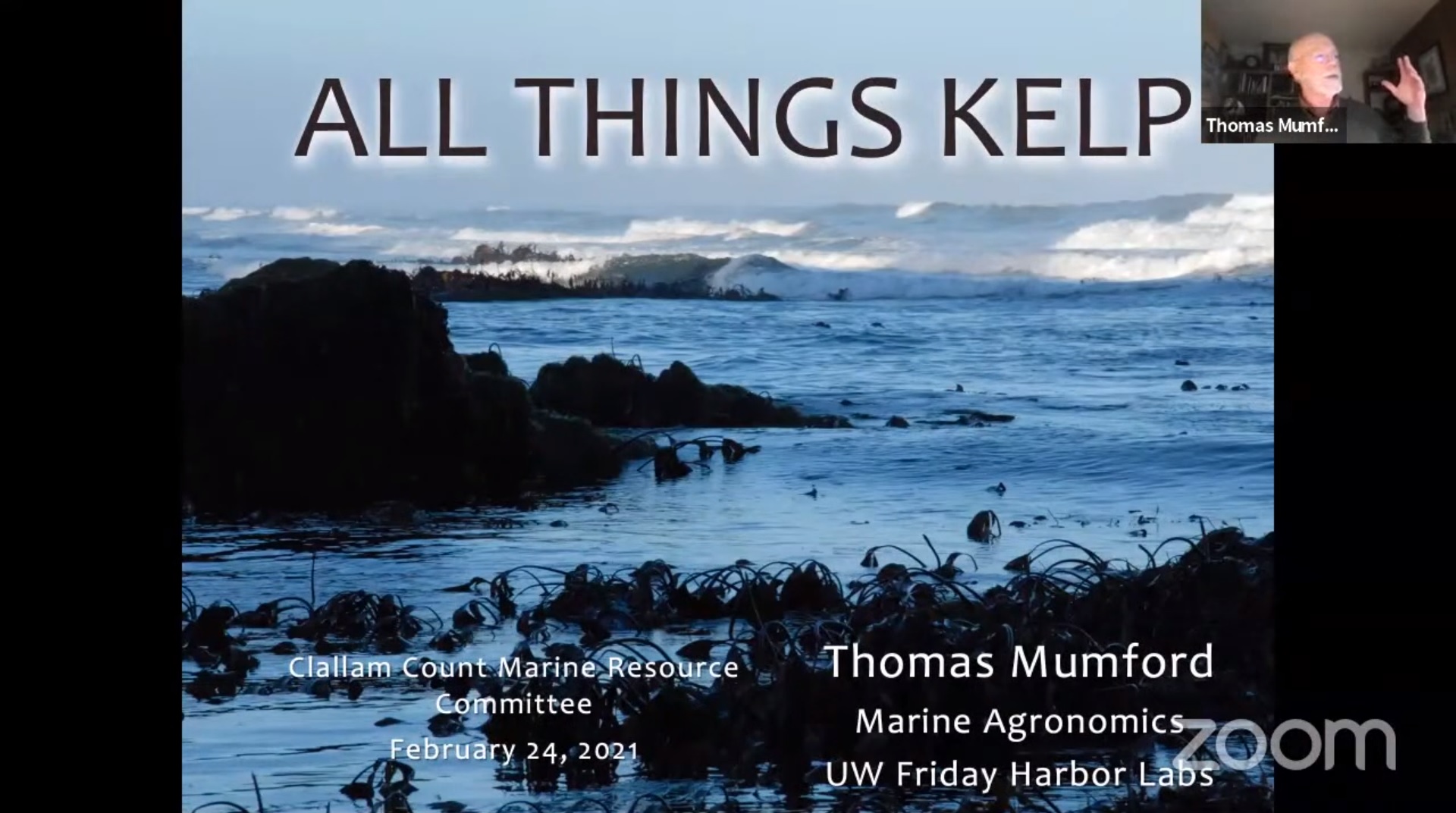Kelp Bed Monitoring
As part of a regional effort, the MRC conducts annual surveys by kayak of two kelp beds - Freshwater Bay and Clallam Bay - to better understand kelp bed health and trends.
The large brown algae commonly known as ‘kelp’ provide habitat to a variety of species in Puget Sound, and are considered critical habitat warranting protection. Conspicuous declines in the abundance of bull kelp (Nereocystis luetkeana), the most common canopy-forming species in Puget Sound, have been observed in many areas. Scientists are currently investigating whether growing kelp can reduce CO2 levels in the inland marine waters of Puget Sound.
In 2014, the Northwest Straits Commission launched a regional survey of bull kelp beds using a kayak-based survey protocol. Several agencies, including the Department of Natural Resources, are interested in these on-the-water surveys to confirm the data from their flight surveys. The following video shows what this project looks like in practice. Clallam MRC joined the effort in 2015 - scroll down to see maps of our results.
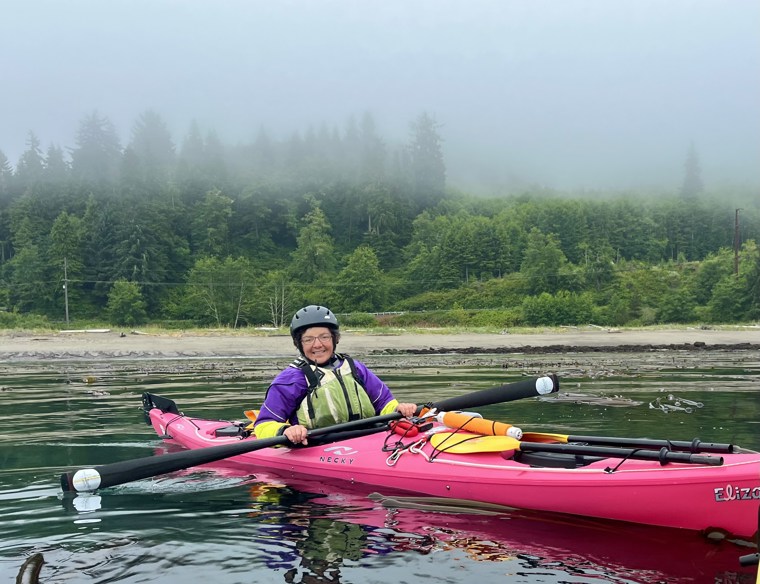
Photo credit Chelsea Korbulic
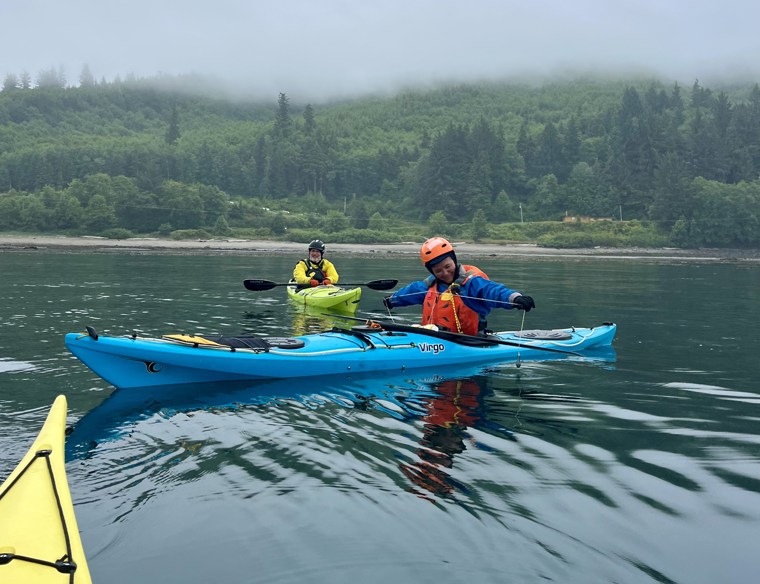
Photo credit Chelsea Korbulic
Freshwater Bay Kelp Beds
Since 2016, Clallam MRC has surveyed two kelp beds in Freshwater Bay. The effort includes delineating the extent of each kelp bed and estimating the distribution of the two most prominent species - bull kelp and giant kelp. The maps below show the extent of the two beds from 2016 to 2024.
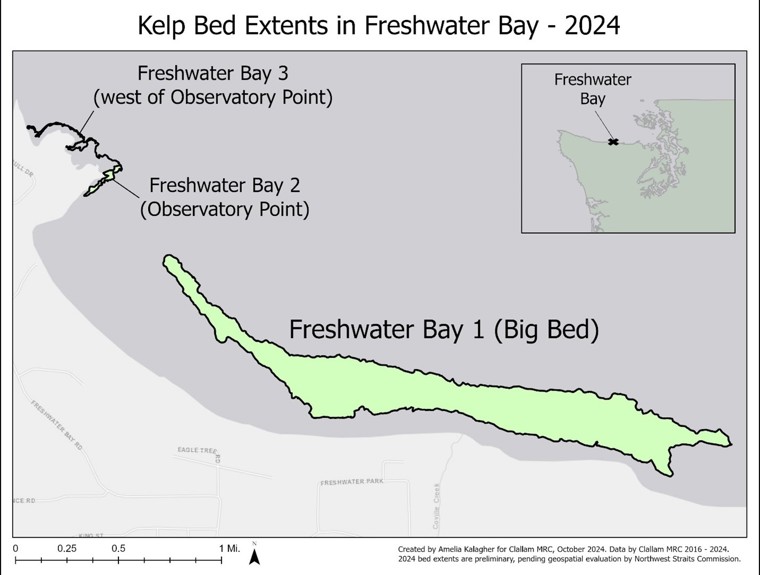
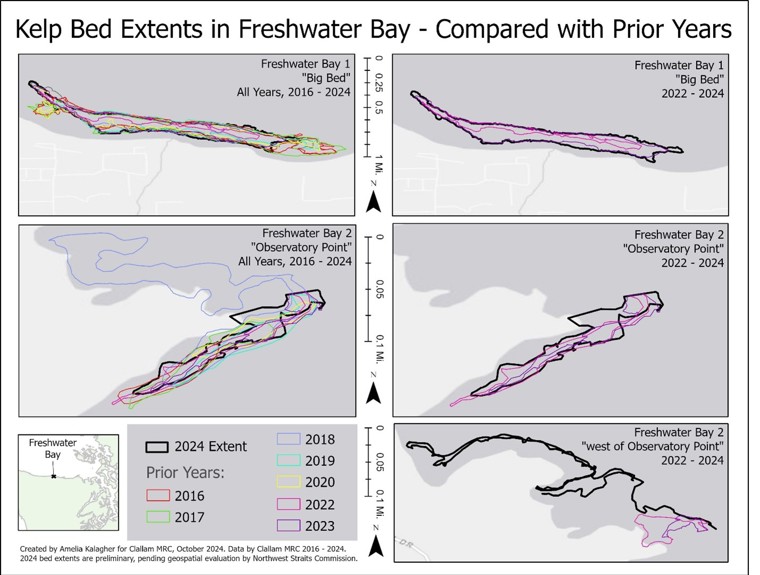
Clallam Bay Kelp Bed
In 2016, a land-based reconnaissance trip looked at several kelp beds between Deep Creek and Neah Bay. The kelp beds along the Strait are usually very large and therefore not suited for the kayak survey technique. However, one smaller kelp bed in a relatively protected area west of Clallam Bay was identified as a possible kelp bed to be surveyed in 2017.
Similar to the effort in Freshwater Bay, the kelp bed was delineated and the composition of bull kelp and giant kelp was estimated. The map below shows the extent of the kelp bed from 2017 to 2023. Due to availability and weather, a survey could not be conducted in 2024. 2025 survey results will be published when they are available.
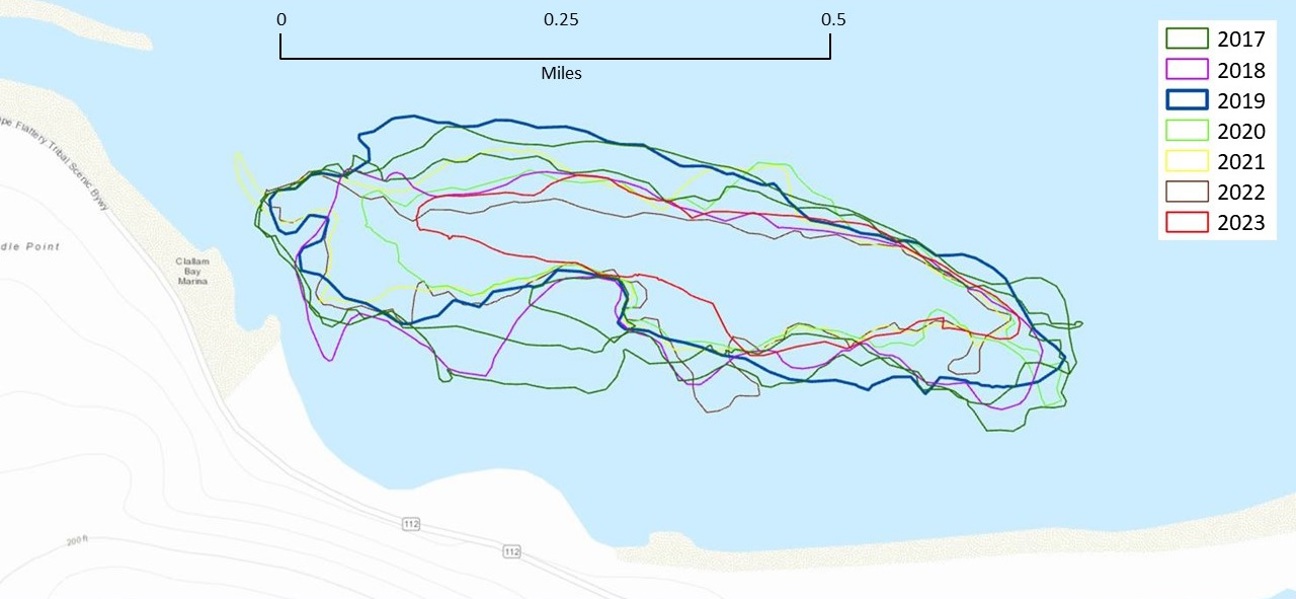
PRIOR INITIATIVES
In years past, the Clallam MRC has added additional components to our routine kelp bed monitoring when possible. Read on to learn about temperature logging, a kelp presentation by Tom Mumford, participation in a kelp expedition, and linear extent surveys.
More resources related to kelp in the Salish Sea can be found at the Northwest Straits Commission's kelp resources webpage:
Learn more about kelp - Northwest Straits Commission
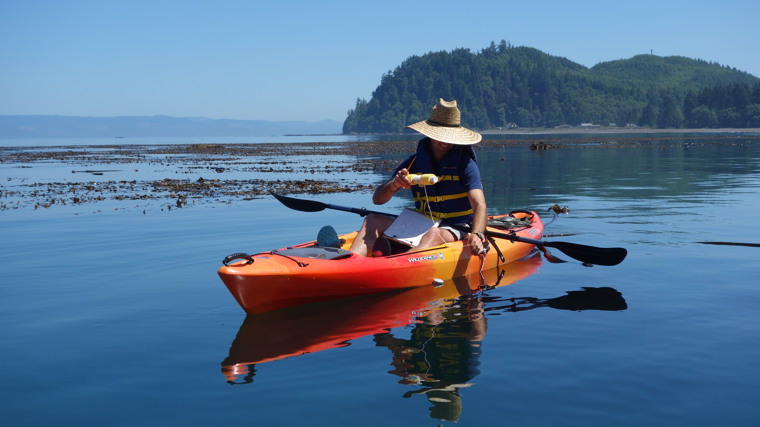
Taking temperature and depth measurments
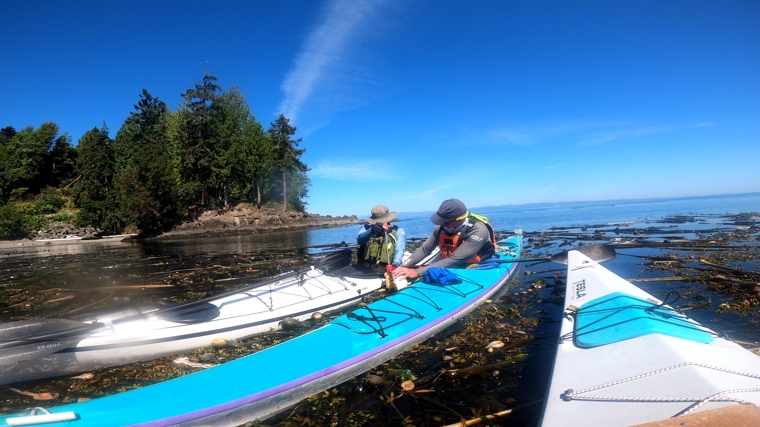
Collecting a plankton sample
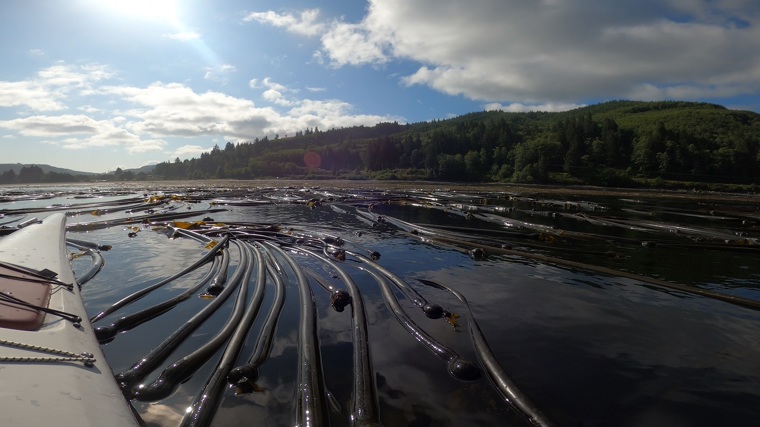
Nereocystis leutkeana ("Bull Kelp") in Clallam Bay
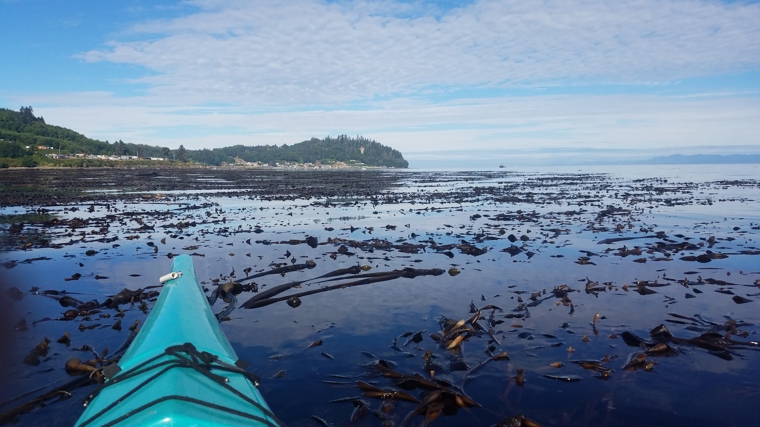
Macrocystis pyrifera ("Giant Kelp") mixed with Nereocystis in Clallam Bay
TEMPERATURE MONITORING IN FRESHWATER BAY
In 2020 a pair of marine temperature loggers were placed in the large kelp bed at Freshwater Bay from July - September, to collect data on seawater temperature fluctuations throughout the canopy kelp growing season. One monitor was placed near the surface of the water column at low tide, the other was placed mid-water column, near the seafloor. Each monitor was set to capture a temperature measurement every 10 minutes.
The temperature monitors were placed again in 2021 following the same procedure, at Freshwater Bay from July - September. Click to view the resultant data for the surface and the seafloor monitors.
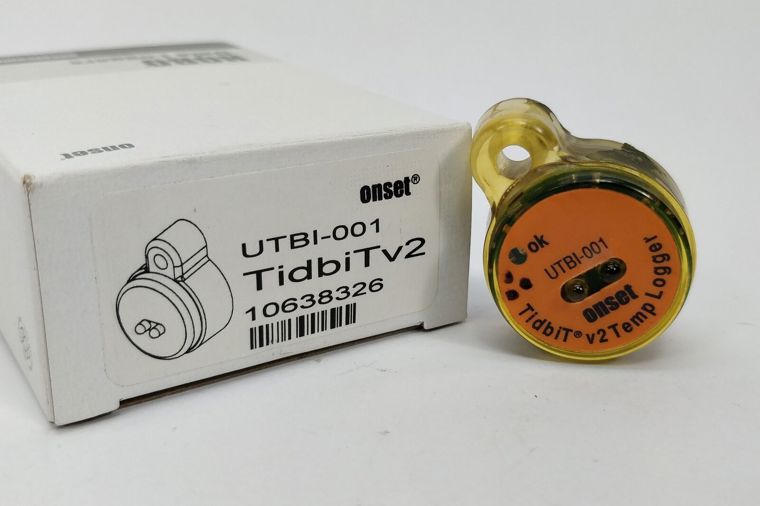
HOBO marine temperature logger
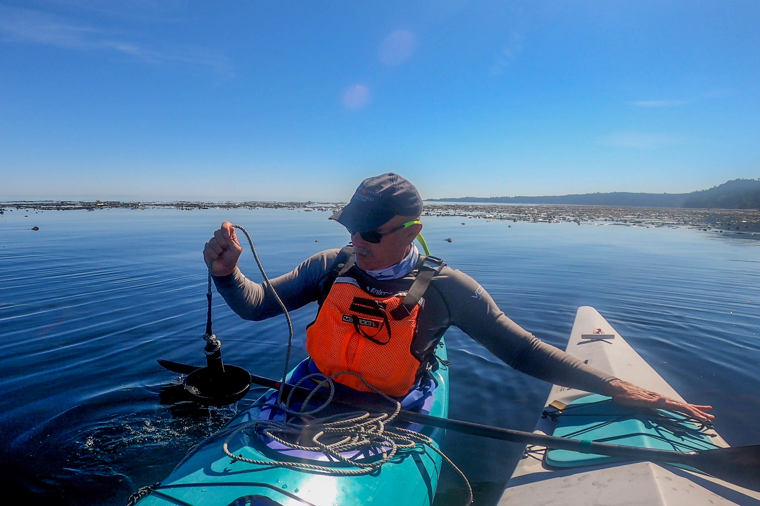
Deploying temperature monitors
"AlL THINGS KELP" WEBINAR
Watch the recording of a webinar hosted by Clallam MRC, featuring Dr. Tom Mumford. Learn about the importance of kelp in our local ecosystems, and its significance as a marine resource! Click here to watch.
KELP EXPEDITION WITH PSRF
In July 2021 Clallam MRC participated in Puget Sound Restoration Fund's Kelp Highway Expedition. The Expedition brought together volunteer participants with researchers from organizations including Northwest Straits, WA Department of Fish and Wildlife, University of Washington, and local Jamestown S'Klallam and Lower Elwha Klallam Tribes. The teams conducted various research and surveys at the kelp beds in Freshwater Bay, including kelp bed area and perimeter measurements, water quality testing, photosynthetic performance, nitrogen and carbon content, testing for presence of microplastics, population and biodiversity surveys, microbe genomics, and collection of bull kelp sori (reproductive material) for a seed bank of kelp gametophytes, and more.
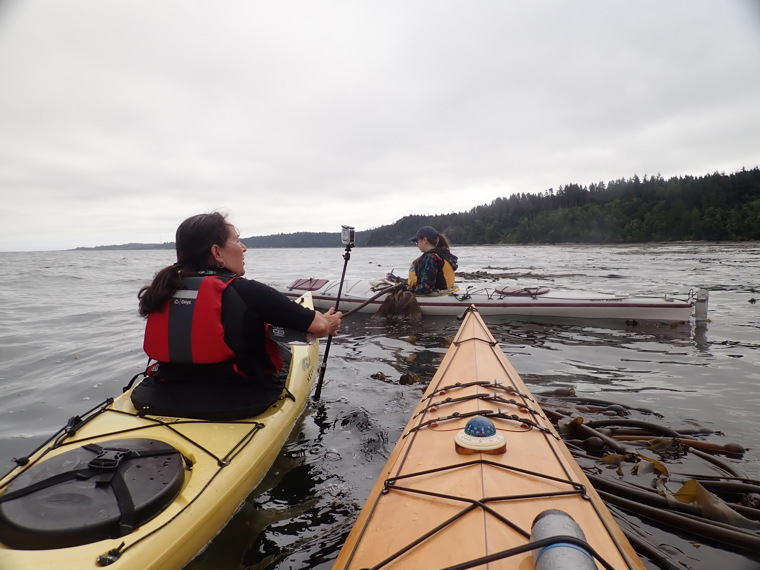
Documenting kelp bed data
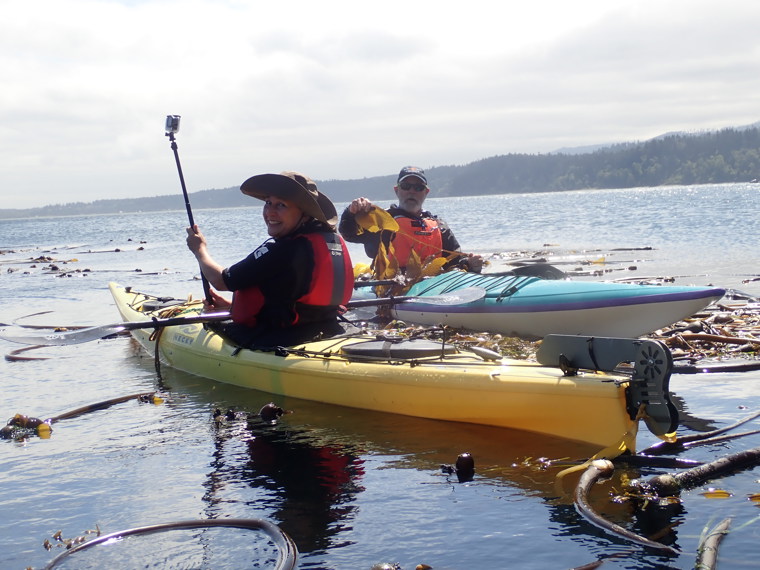
Photographing and investigating kelp

Nereocystis leutkeana anatomy: holdfast, stipe, bulb, and blades

Nereocystis leutkeana is also called "maiden hair kelp" for its flowing blades
LINEAR EXTENT SURVEY
In September of 2020, Clallam MRC Volunteers conducted a survey of the North Olympic coastline via a motorized boat, in an effort to determine presence & absence of floating canopy kelp in the Straits. This allowed for a more comprehensive idea of where kelp beds are still growing in our County, beyond the scope of the particular beds which are monitored by kayak annually. Due to COVID restrictions, the survey team were able to search only the Easternmost half of the Peninsula. In future seasons, Clallam MRC may return to survey the remaining Northern coastline.
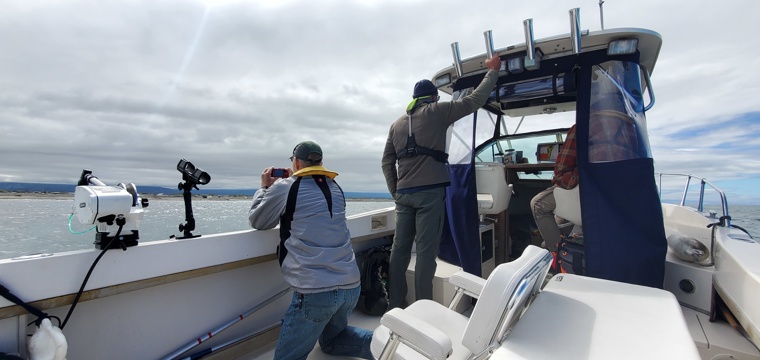
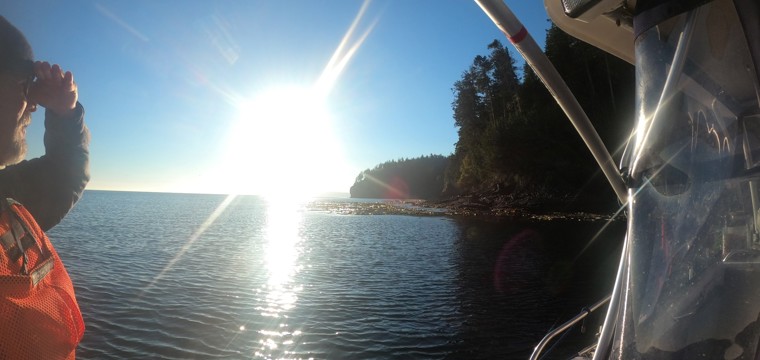
Surveying for kelp
